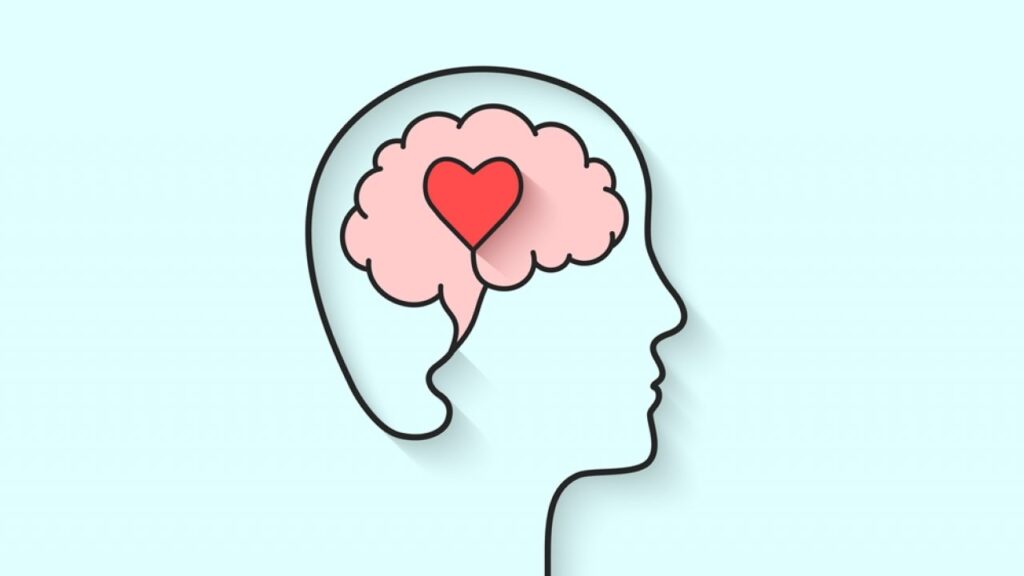Abstract
The outbreak of COVID-19 pandemic had vastly disrupted the existing global routine. Neither gigantic, nor petite countries were saved from the cruel clutches of corona. The magnitude of the issue could be easily surmised from the fact that the WHO had declared the pandemic as International Public Health Emergency.
Though pandemics are not novel to humans, every of their clans, teach humanity altogether new lessons. In strict adherence to this principle, we learned myriad lessons while facing the Covid-19. It was observed that, along with health, finance and social life Corona pandemic had greatly impacted human languages and human psychology.
To exploring this unexplored region of Covid-19 pandemic, this qualitative research work attempted to examine vocabulary employed in articles, social media, print-media, casual conversation and in digital media. Pandemic has also left an indeliblemark on the human psychology and many seem to have faced troubles deep inside. This research paper endeavors to understand the impact of Covid-19 on languages, psychology and women and children.
Keywords
Covid-19 pandemic, words, language, psychology, trauma.
Introduction
Covid-19 pandemic time was the most bizarre period global citizens have experienced in recent years. Though unintended, it has left the long-lasting consequences for the present and future generations. The pandemic has undoubtedly influenced almost everything of post-pandemic. Health, education, trade, international relations, social spaces, literature, interpersonal communication and even languages have been indirectly influenced by the unwelcomed guest: Covid-19. Social distancing, virtual meeting, lockdown, social norms, teaching learning and communicative strategies were radically revamped so as to suit the need of the hour as part of preventative practices. These all-sea changes have influenced the contemporary times and will continue to influence long time from hence. The communication environment during covid-19 pandemic brought in an exhaustive list of new words thereby leaving a long-lasting incidental impact.
Objectives
The objectives of this study are as follow:
- Accentuate the global impact of Covid-19 on language and language acquisition.
- To Grasp the impact of Covid-19 on and mental health psychology.
- To learn the impact of pandemic on the lives of women.
- To offer insights on social psyche towards language and psychology during emergency.
Method
The present research work uses published research papers, various reports on Covid-19 pandemic for understanding issues. For that purpose, information is collected and collated from different websites, journals and e-contents relating to impact of Covid-19 and its far- reaching impacts. For this study purpose the researcher interacted with some elderly women, men and family members. Some research papers were also used and interpreted.
Linguistic Impact
While imbibing the significance of language Dottie LeBeau writes, ‘losing the language means losing the culture. We need to know who we are because it makes a difference in who our children are.’ The inherent connections between language, cultures and social lives have been underscored by Dottie in these words. It also implies the pivotal importance of language acquisition but many children seem to have issues in language acquisition during covid- 19 pandemic. “Peer talk” is a crucial component of pragmatic development; this includes conversational skills such as turn taking and understanding the implied meaning behind a speaker’s words but many children lost the opportunity of interaction and language learning.
As language has a close relationship with human society, it can change over time in its development. Language can change and develop because the meaning of certain phrases changes in the context of language use (Strongman, 2017). Hence languages are extremely dynamic and active. English language during covid period experienced a considerable rise in application of a single word in extremely limited time and that word ‘Covid’ dominated the entire global discourse in the last three years. The columns in the newspaper’s magazine journals and in media everyday used coins some new terms and phrases closely related to Covid-19. Usually, any such kind of addition or formation of a new word is called as neologism which was hugely found since 2019. The exhaustive list of the newly quoined terms and the terms existed but were not in use extensively became popular since 2019. The words like viruses, SARS, human- to- human, respiratory, self- isolation, lockdown, quarantine, non- essential travel, social distancing, ventilator, PPE kit are part of everyday life. To Papernik, “neologism is a new word or a sense of a word”. But language in totality is considered as connecting link between cultures languages and individuals to transfer information.
As the word formation is such a kind of lexical arrangement in which muffins acronym synonyms are used and created. With each passing day, more and more new English terms are used in this pandemic. The words like covidient means a person who follows all covid norms and covidiot is a person who does not follow the rules like social distancing. Self- quarantine, self-isolation, WFH, pandemic, Covaxin, Covishield, covid care centers, vaccine, virus, immunity, sanitizer, community spread, epidemic, incubation period, ventilator, virus, Tsunami of Covid-19, super spreader, transmission, lockdown, cause, new normal, death crisis, outbreak sanitizer, disinfect such kind of words were used in social media. It is also observed that these new words reflect society, culture, and contemporary traits.
Psychological Impact
The scale of the Corona-19 pandemic was so high that, as per WHO report, nearly 3 million, citizens of 133 countries lost their lives and many maneuvers of social isolation had to be employed. This community isolation globally caused so much of enormous personal psychological harm and were in grave need of caring of mental health. The transition from physical classes to online classes largely upset the lives of students and their families, posing a concealed risk to the mental well-being of children and citizens of all ages. The impact was so detrimental that many unusual complaints were received. The mental health of children has been affected by numerous ways affecting emotions, sports, social and interpersonal interactions and behavior. With regard to the children having existing psychiatric conditions such as attention-deficit/hyperactivity disorder (ADHD), nervousness, despair, mental disorders, and behavior disorders worsened.
The isolation during pandemic multiplied the vulnerability by affecting many with depression and feeling of anxiety, suicidal feeling and loneliness. The pandemic affected our thought process, unconscious and subconscious mind by arousing panic, paranoid, bias and exclusion, anger and ferocity. Not all were infected of COVID-19 pandemic, but all were plagued by the danger of the pandemic. The coronavirus crisis is the embodiment of “nameless dread” (Bion, 1962) brought many eccentric-and-never before things. The appallingly rising numbers of patients every day, the bombarding news reports on all news channels, the scary images of the health workers, lately declared called as Covid warriors, in PPE kits, the alarming what’s app videos of showing how the close family members too abandoned the dead bodies of their dear ones and these bodies were cremated by the health workers.
The pain of the street children, beggars, destitute and many unclaimed bodies were all the reports extremely nerve shattering when the whole world was locked down. The blasting details of information and misinformation almost had numbed the sensitive brains and infected with doubt and dismay without being harmed by the notorious virus. The shock of the dilapidated public health system, blunt social inequalities and cases of inhuman treatment of humans to covid-affected-human, the way infected patient had to go to ambulance and trauma of being separated from the family members all lead to deep rooted psychological shock and concealed inner realities.
COVID-19 also came heavily on older population. older adults were recognized as a group at risk, and strict governmental restrictions were forced on them. But that could not control the mental health related issues of the elders. It amounted to loss of sleeping hours, reduction in daily physical activities thereby demanding more understanding of this issue. It also has another dimension that the individuals particularly elderly, who had chronic illnesses were at the more risk of covid-19. Having read such details also made the elderly worrier escalating the health issues. Though avoiding contamination was the most preferred solution but loneliness and separation from the family members turned out to be another issue.
Children, women who were pregnant, miscarrying or having any other health issues, and elderly people suffered the serious mental health issues during the covid-19 situation. Particularly those who had any existing health issues were more susceptible to risk. Apart from health, women also seem to have faced multi-layered issues such as lower pay at work places, losing job, and many women had to opt out of jobs and amounted household chores at home which all also multiplied the depression among women.
Conclusion
The impact of Covid-19 pandemic has been so encompassing that many research studies need to be taken up still. The present paper attempted to understand the impact of covid -19 with special reference to language, literature and mental health of women and children. The covid vocabulary emerged out of the pandemic time supplemented English language with many existing but not in much circulation and many which were coined newly. The article also focused on the mental health issue of the women and children. The double jeopardy of women at home, professions and at financial level are also looked at in this article.
References
Bansal, Parul, Human Arenas, (2022). Vol 5, The Ravaged Psyche: Impact of the COVID-19 Pandemic on the Human Mind. Vol 5, pp. 694-706.
Bion, W. R. (1962). Learning from experience. London: Karnac Books. Camarata SM. Naturalistic intervention for speech intelligibility and speech accuracy. In: Interventions for Speech-Sound Disorders in Children. Brookes; 2010:381-405.
Burgess, O. (2015). Cyborg teaching: The transferable benefits of teaching online for the face-to-face classroom. Journal of Online Learning and Teaching, 11(1), 136-144. https://jolt.merlot.org/vol11no1/ Burgess_0315.pdf
Covid-19 is hurting children’s mental health. (2020). Accessed: July 19, 2020: https://www.weforum. org/agenda/2020/05/covid-19-is- hurting-childrens-mental-health/.
Covin, J. G., & Wales, W. J. (2018). Crafting high-impact entrepreneurial orientation research: Some suggested guidelines. Entrepreneurship Theory and Practice, 43(1), 3-18. https://doi.org/10.1177% 2F1042258718773181
Creswell, J. W., & Poth, C. N. (2012.). Qualitative inquiry & research design : choosing among five approaches. Sage.
Empowering students with disabilities during the covid-19 crisis. (2020). Accessed: July 18,
2020: https://bangkok.unesco. org/content/empowering-students- disabilities-during-covid-19-crisis. WHO- https://www.who.int/data/ stories/the -true – death-toll- of- covid-19-estimating-global-excess- mortality
Shah K, Mann S, Singh R, et al. (August 26, 2020). Impact of COVID-19 on the Mental Health of Children and Adolescents. Cureus 12(8): e10051. doi:10.7759/cureus.1005
Aditi B. Gaikwad
Student, India
https://doi.org/10.57259/GRJ7843
Bio
Aditi B. Gaikwad is pursuing Bachelor of Arts from St. Xavier’s ollege Mumbai. Being 19 years old and having experienced pandemic time/ lock down at home and has penned her thought about the bizzare experience during Covid in her poems and this article as well. Aditi is the Rotaract Coordinator at Navi Mumbai and also an active social worker. She is pursuing her graduation with English Literature, History and Political Science.
Research Objectives
The paper Comprehending the Linguistic and Psychological Impact of Covid 19- discusses the common issues portraying global minds and the suffocating experiences of the masses along with the huge amount of newly discovered vocabulary the world experienced.


